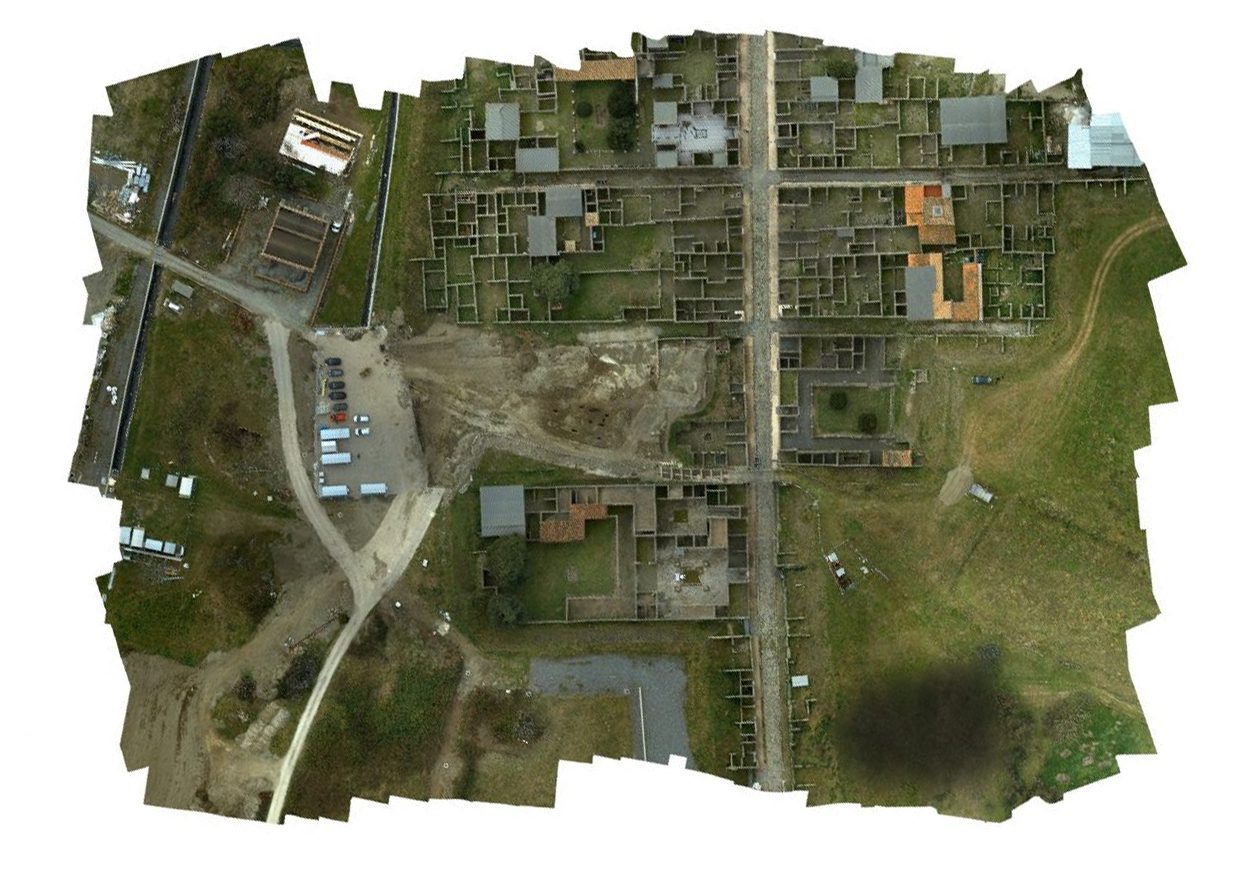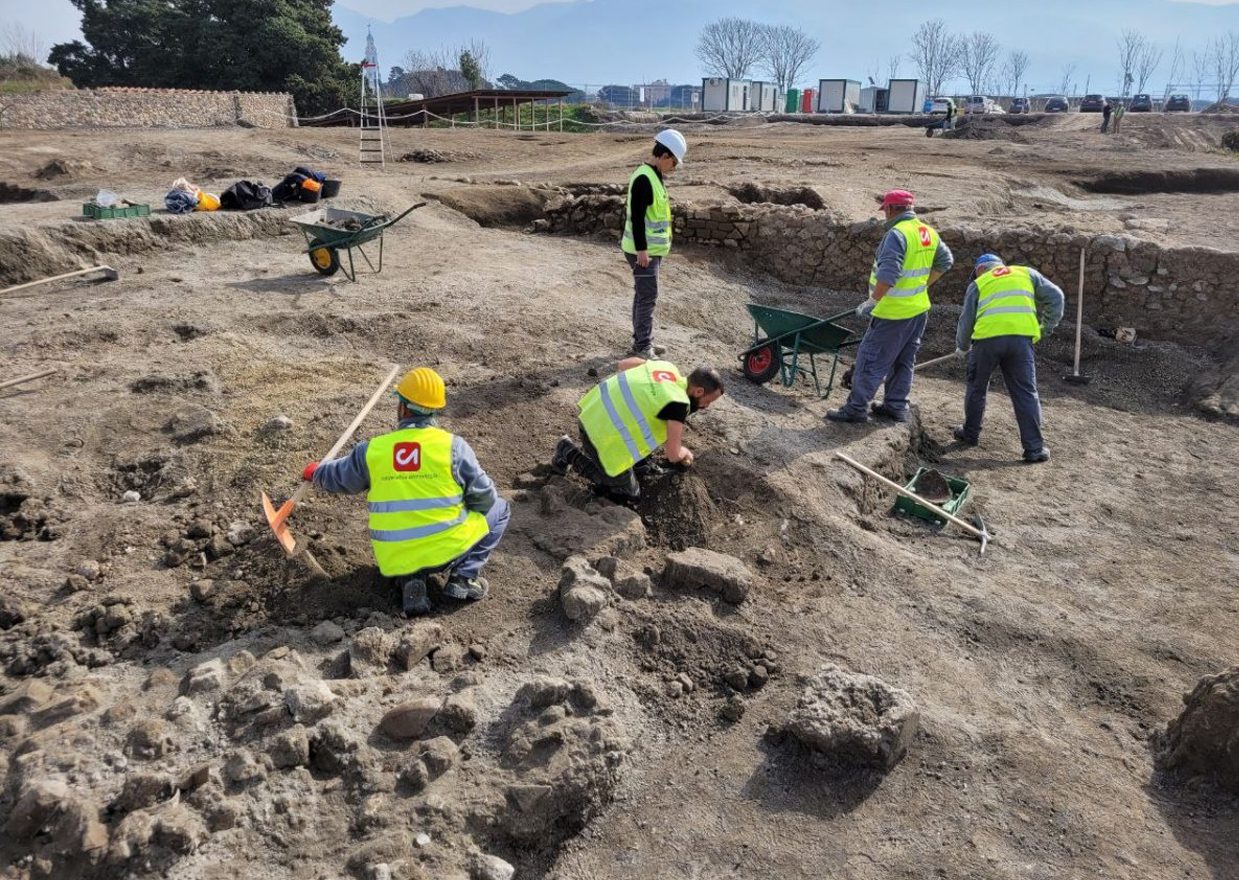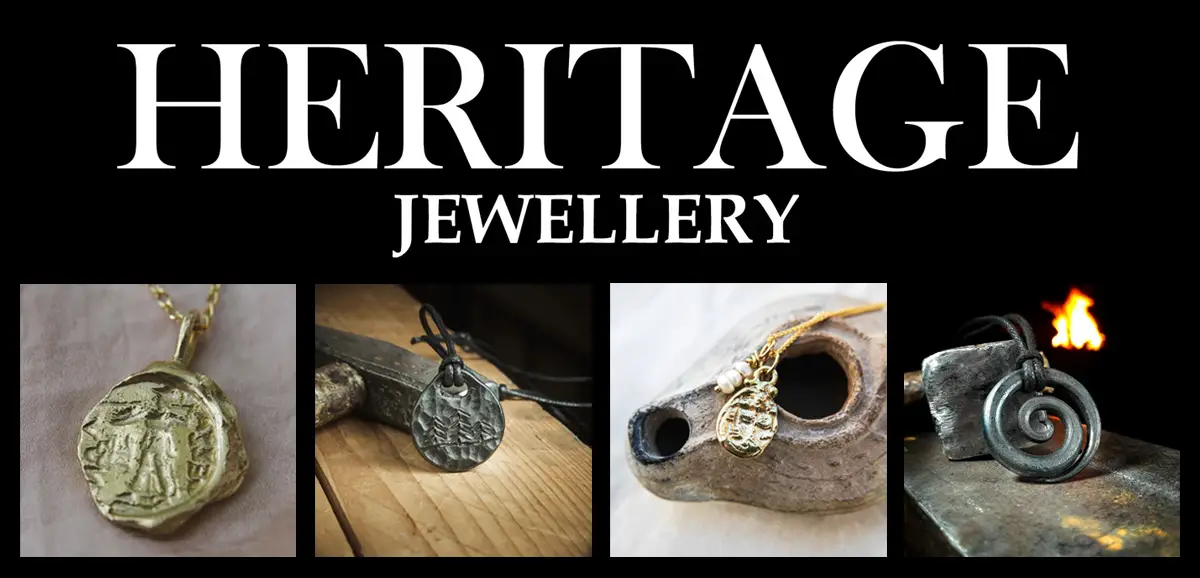Archaeologists from the Archaeological Park of Pompeii have resumed excavations at Roman Pompeii in a large research project, revealing new insights into city life buried during the eruption of AD 79.
Pompeii was a Roman city, located in the modern commune of Pompeii near Naples, in the Campania region of Italy. Pompeii, along with the Roman town of Herculaneum, were buried under 4 to 6 metres of volcanic ash and pumice during the eruption of Mount Vesuvius in AD 79.
The Vesuvian eruption spewed forth a deadly cloud of super-heated tephra and gases to a height of 33 km, ejecting molten rock, pulverised pumice and hot ash at 1.5 million tons per second, ultimately releasing 100,000 times the thermal energy of the atomic bombings of Hiroshima and Nagasaki.
In a new research project by a team of archaeologists, archaeobotanists, numismatic volcanologists, ancient topographers, as well as architects, engineers and geologists, the project led by the Archaeological Park of Pompeii, is excavating a large area of 3,200 m2.

Gabriel Zuchtriegel, Director the project, said: “Excavating in Pompeii is a huge responsibility and is a non-repeatable operation. Therefore, we need to document and analyse each find and all the stratigraphic relationships, and immediately think about how to secure and restore what we find.”
The excavation area is focused on Insula 10 of Regio IX, which occupies the central part of Pompeii, bounded to the north by the Via di Nola, to the west by the Via Stabiana, and to the south by the Via dell’Abbondanza.
The team have already started to reveal the masonry ridges of the upper floors of ancient buildings. This includes a house first studied in 1912, which was converted in its later stages into a fullonica (Roman laundry) and contains an oven in the upper cell.
A series of holes identified in the upper stratigraphic levels demonstrate the agricultural use of the land or are perhaps linked to the lapilli quarrying activities in the modern era. Up until recently, the area was used for farming various agricultural crops, with rural buildings, wooded areas and farmer’s greenhouses still present until 2015.
Header Image Credit : Pompeii Sites








